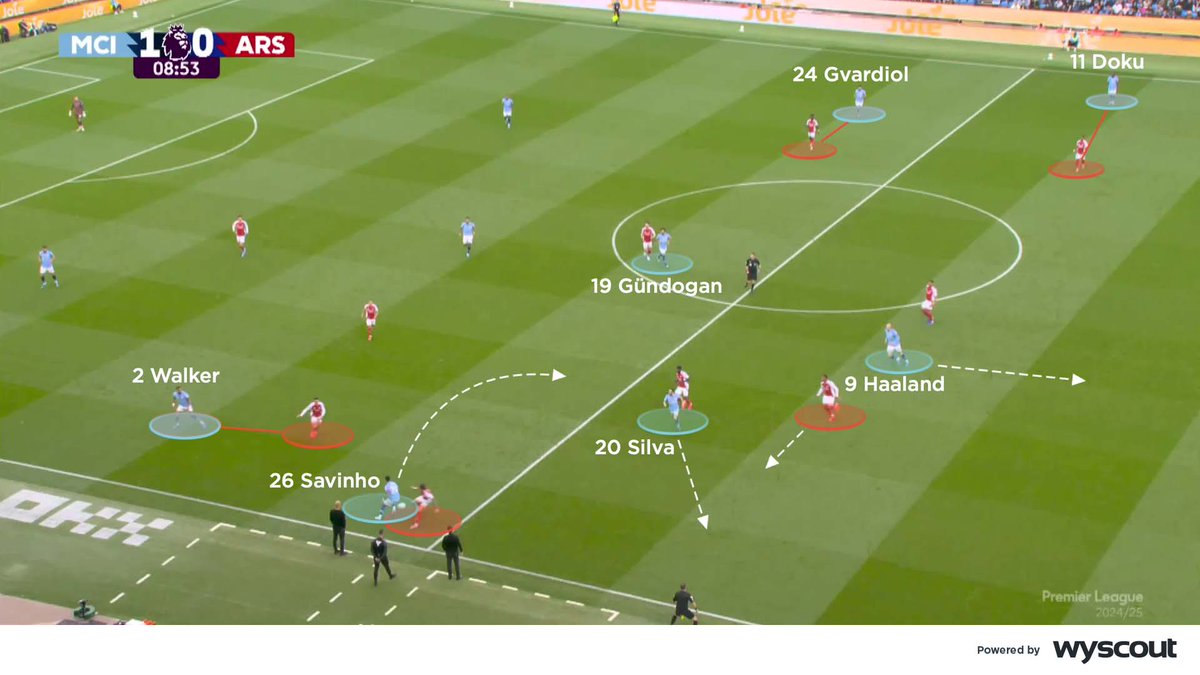🆕 Fresh analysis! 🙌
Marcus Thuram, son of Lilian, is firing Borussia Mönchengladbach’s challenge for Champions League qualification. We assess his rise 👇
coachesvoice.com/marcus-thuram-…
Marcus Thuram, son of Lilian, is firing Borussia Mönchengladbach’s challenge for Champions League qualification. We assess his rise 👇
coachesvoice.com/marcus-thuram-…
Thuram holds his position well and does not always get drawn towards play, instead taking up a position that makes it difficult for defenders to see both him and the ball. Then, when a chance presents itself, Thuram springs into action and sprints in behind #Thuram 

Thuram is adept at swiftly flicking the ball into that gap with a cleverly disguised and extremely quick movement. He then continues his run in the opposite direction and draws defenders with what is essentially a dummy run. Doing this can create space in tight areas #Thuram 

Thuram often has the element of surprise on his side, so it perhaps makes sense that the majority of his goals are scored off one touch and after he has ghosted into a position in the box on the blindside of his opponent 

Thuram is both a goalscorer and a creator rolled into one; he is Gladbach’s joint-top scorer in 2019/20 and ranks in the top 10 in the entire Bundesliga for assists. He makes the majority of his appearances on the left side of the attacking midfield three in their 4-2-3-1 #Thuram 

• • •
Missing some Tweet in this thread? You can try to
force a refresh
















